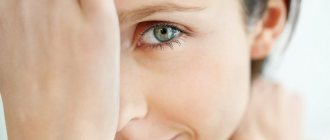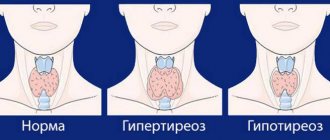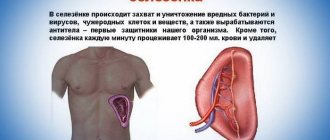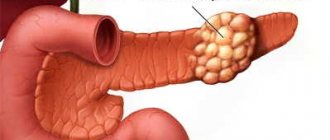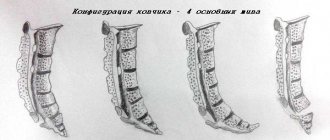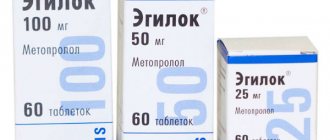Today, people quite often encounter various types of neoplasms. It should be noted that neoplasms can be both benign and malignant.
Often, the formation and growth of tumors occurs without the symptoms that are inherent to them. It is for this reason that most patients do not even realize that a tumor is progressing in their body.
Late diagnosis is one of the reasons why mortality increases. It is extremely important, if you have a tumor, to diagnose it in the early stages. Effective and prompt treatment can provide lasting positive results.
Despite the fact that patients develop benign tumors, this is not a reason to relax. Any benign tumor can develop into a malignant neoplasm.
In order to take appropriate measures in a timely manner, it is necessary to visit a doctor who performs a visual examination, as well as undergo regular tests and ultrasound examinations if the doctor deems this necessary.
What types of neoplasms are there and what is their danger?
Today, there are quite a lot of neoplasms of different nature.
One of the most common is a cyst. A cyst is a neoplasm that can appear on any organ, and relapse is also possible - the appearance of a neoplasm again on the same organ.
Does the cyst pose any threat to people's lives? It all depends on what contents fill the cyst.
To do this, as a rule, they take an analysis of the contents and then send it for histological examination.
When patients are unaware of the existence of this type of neoplasm, the cyst may burst during an exacerbation. In this case, the contents leak out and urgent surgical intervention is required to save a person’s life.
Reasons for the development of pathology
Usually the cause of the cyst is advanced mastopathy and serious endocrine disorders. The main factors causing the disease are:
- severe deviation from the norm of a woman’s hormonal levels, excess estrogen;
- frequent exposure to stress;
- heredity;
- pregnancy and childbirth;
- refusal of breastfeeding;
- breastfeeding a child for more than a year;
- physical damage (injury) to the chest;
- exceeding the duration of use of hormonal contraceptives or not observing the required pauses when taking them;
- abortions, especially multiple ones;
- breast surgery;
- excessive sun exposure and overdose of ultraviolet rays in solariums;
- late pregnancies;
- childlessness;
- use of “interrupted intercourse” as a means of contraception;
- excess body weight (obesity) or breast hypertrophy;
- poor nutrition, impaired fat metabolism, leading to hormonal disruptions;
- intoxication of the body in hazardous industries;
- bad habits: smoking, alcohol abuse or unnatural foods.
Pathology can also accompany a number of the following diseases:
- diabetes;
- liver diseases, biliary disorders;
- dysfunction of the thyroid gland;
- ovarian diseases leading to hormonal disorders;
- genitourinary system infections;
- diseases of the thoracic spine, thoracic scoliosis.
The causes of pathology are truly varied. If risk factors are present, it is necessary to monitor the condition of your mammary glands. It is advisable to eliminate the causes of this disease from life. Many of them can be eliminated quite easily - for example, bad habits and poor nutrition, leading to obesity.
What is a breast cyst?
To determine what a breast cyst is, you need to understand what it is and what the composition of the neoplasm is:
- A cyst is a cavity-type formation. The walls of such a tumor are connective tissue. Inside the neoplasm there is a liquid that is transparent in color.
- It is worth saying that cysts can form in completely different places and on different organs. The most common place is the mammary glands. Often doctors find a cyst directly in this organ. Knowing the importance of the mammary glands, one cannot help but mention how important it is to regularly visit a mammologist who can detect a tumor, diagnose it in time and, if necessary, remove it.
- A mammary cyst is a pathology that can be either multiple or single. Pathology is formed and concentrated directly in the cavity of the mammary glands. The neoplasm contains fluid, the formation of which occurs in the ducts.
- As a rule, this disease occurs without any symptoms. After a long time, the disease makes itself felt and begins to be accompanied by pain in the mammary glands after a short period of time. The pain manifests itself as a burning sensation in the sternum. The disease is also accompanied by inflammatory processes and suppuration of the cavity where the cyst is located. In the presence of large tumors, the mammary glands may be subject to deformation.
- If we talk about this neoplasm from a physiological point of view , then it is a cavity that is limited by the connecting capsule. It is in the capsule that the liquid, which is not inflammatory in nature, is concentrated.
In most cases, a cyst is a consequence and continuation of fibrocystic type mastopathy.
The formation of the cavity is explained, first of all, by the processes of enlargement of one of the gland ducts. The formation is also influenced by the process of accumulation of secretions and the formation and development of a fibrous type capsule.
The resulting tumor can take on a round, oval or uneven shape. The size usually ranges from a few millimeters to several centimeters, but this happens in rare cases.
The formation of such tumors occurs primarily due to hormonal imbalance. The hormonal background has the most global influence on the appearance of tumors and their development as well.
The presence of estrogens, as well as hormonal contraceptives, also plays a major role. When taking this type of contraceptive and with an increased level of estrogen, sexual regulation can be disrupted, which will subsequently lead to the formation of cysts.
The main types of neoplasms in the mammary glands
The main types of cystic neoplasms in the mammary glands include: atypical, fibrous, solitary, ductal and multilocular.
Atypical breast cyst
Atypical cysts are characterized by the accumulation of fluid in areas of dilation of the milk ducts. In most cases, the woman does not experience any pronounced symptoms, but in cases of hormonal fluctuations, the cyst begins to grow. The formation is considered benign, but the risk of transformation into a malignant tumor, and even cancer, increases. The reasons that provoke this type of cysts: relapses, frequent inflammation of the mammary gland ducts, papillomas.
Fibrous cyst of the breast
Fibrous cysts of the mammary gland often develop during menopause in women; during this period, sharp hormonal changes occur. Small fibrous cysts do not cause concern or danger to the body. Problems arise in the case of dynamic growth. Also, a fibrous cyst is a concomitant disease with oncology in the mammary glands.
Solitary cyst of the mammary gland
A solitary breast cyst is formed by fluid and is localized in one of the breasts. This is a benign formation that thickens as it develops. Characterized by pain during the menstrual cycle. It does not pose a major health hazard, but requires consultation with a doctor.
Ductal cyst of the mammary gland
A ductal cyst is a rare benign formation that consists of a large number of growths inside the mammary gland. Women over 45-50 years of age are considered at risk. It is dangerous that this species can develop into a malignant tumor.
Multilocular cystic formation in the breast
A multi-chamber cystic formation is characterized by the fact that at the site of the formation of one capsule-formation, many others appear, varying in size. The processes develop into multi-chamber accumulations and form one tumor.
Symptoms of a breast cyst
As mentioned earlier, a cyst is a neoplasm that often occurs without symptoms, and it is quite difficult to determine the presence of a tumor without symptoms. However, this may not last long.
In most cases, after a certain period of time, the cyst begins to worsen, and then the situation has to be radically resolved with the help of surgical intervention.
The thing is that a cyst is a benign neoplasm. Of course, there is very little likelihood that such a neoplasm will develop into cancer and entail a number of negative consequences.
However, this is not a reason to be negligent about such health changes. Early diagnosis, even when a cyst is detected, is very important and necessary.
Small cysts may not be noticed at all. As a rule, a cyst is diagnosed at an appointment with a mammologist and also during an ultrasound examination. Enlarged cysts are accompanied by painful sensations, the manifestation of which occurs in the period before or after menstruation.
If the cyst is larger in size, then you may notice a thickening of the mammary glands.
Of all the cysts capable of formation, there are cysts filled with secretion. This type of cyst is accompanied by pain, unpleasant dancing sensations, a burning sensation, as well as compactions that are uneven in size and distribution.
There are a number of symptoms that may indicate that there is a neoplasm - a cyst.
Characteristic symptoms in the presence of a cyst:
- chest pain;
- nagging pain and burning sensation in the chest area;
- possible change in skin color;
- deformation of the mammary glands themselves;
- the occurrence of fever.
Diagnostic methods
Obviously, it is a bad idea to ignore a problem such as a cyst in the mammary glands. It is dangerous to leave a potential cause of suppuration or malignant tumor in the body. Therefore, at the first symptoms you need to undergo diagnostics.
The first and simplest technique is professional palpation. An experienced doctor will be able to detect small formations. A breast ultrasound or mammography will help clarify the situation.
If the accuracy of the diagnosis is still questionable, it is worth doing a breast MRI. If necessary, the doctor may take a biopsy. A sample sampling is necessary in order to accurately determine the nature of the formation.
Reasons for appearance
Hormonal imbalance in a woman’s body is not a rare phenomenon, which often occurs unexpectedly and suddenly. During this period, the ovaries secrete a hormone such as estrogen. The problem is that secretion occurs in excess of the required volume. This is the whole problem.
This process primarily promotes tissue proliferation. The main and main components that influence this process are estrogen, epithelium of the ductal mammary glands, and tissue swelling. This kind of process contributes to blockage of the ducts, as well as the formation of cysts.
The development of a cyst is influenced by factors such as:
- Psycho-emotional stress;
- Frequent abortions. Such procedures cause global damage to a woman’s health, including damage to the hormonal system. Abortion contributes to the disruption of ovarian function. As a result, a large amount of a hormone such as estrogen is released.
- Excessive estrogen levels can contribute to excess fat mass, which subsequently affects a woman’s hormonal system.
- Unbalanced diet. If the balance in nutrition is not maintained, the hormonal system may also suffer. Balance in nutrition is an important component and therefore it plays an important role in health, as well as in the functioning of the hormonal system.
- Procedures involving ultraviolet light and heat rays.
- Getting injured.
Alternative techniques
If a cyst has been discovered in the mammary glands, folk remedies should not be taken as a full-fledged method of treatment. Initially, it is better to abandon the idea of solving such a problem yourself. But in addition to the prescribed treatment, with the permission of a qualified doctor, you can pay attention to several proven recipes.
- You need to take several beets, boil them, peel them, and then chop them using a coarse grater. Having selected 200 g of still warm gruel, you need to add 2 tbsp. l. vinegar (9% is suitable). Compresses are made from the resulting mixture and should be used for two weeks.
- Attention should also be paid to melted butter and celandine. They need to be mixed in a 1:1 ratio and rubbed on the area of the chest that is bothering you. This ointment is left on the body for 3-4 hours, after which it is washed off.
- St. John's wort infusion. Another good way to influence breast formation. Dried St. John's wort (25 g) is poured with hot water (0.2 l) and then cooled to a warm state. Next, you need to dip a tampon in this broth and apply it to the problem area of the chest.
Do not forget that treating breast cysts with folk remedies is a method that makes sense to use in the absence of access to professional medical care. In addition, effective treatment is only possible with proper diagnosis.
Kinds
It should be noted that cysts come in different types and can form in different forms in the body.
Speaking about the types of tumors in the form of a cyst, we can highlight the following:
- oval and round shape;
- the shape is incorrect;
- large and small in size;
- single or multiple in nature; For example, with polycystic disease, multiple cysts are more often diagnosed;
- multi-chamber or single-chamber nature;
- with inflammatory processes, as well as without them;
- typical or atypical.
Atypical cysts
Atypical cysts, in turn, are divided into the following types:
- long-lasting;
- with frequent relapses;
- with inflammatory effects;
- benign growths;
- formation of papillomatous appearance in the cavity part of the cyst.
Fibrous cysts
Fibrous cysts occupy a major place among cancer diseases. As a rule, in most cases, this type of disease occurs with breast cancer.
Solitary cysts
Solitary cysts are often diagnosed in women. This type of cyst is a benign dysplasia. As such, this type of cyst does not pose a danger to human health.
A solitary cyst is a neoplasm that takes on a rounded shape upon completion of tumor development. Moreover, such a cyst has an elastic consistency. Visually, such a cyst can be recognized by its swelling with fluid inside.
The reasons for the development are:
- excess body weight;
- refusal of breastfeeding;
- stress;
- hereditary side;
- late birth;
- age category 35 years and older.
Ductal cysts
Ductal cysts occur due to hormonal imbalance, after abortion, endocrine diseases, and others.
Description and types
Breast cysts are special cavities in the glandular tissue filled with fluid. As the disease develops, such formations begin to cause discomfort, pain and burning in the chest. Symptoms may worsen depending on your menstrual cycle.
Features of the disease:
- The reason for the formation of a cyst is the expansion of the milk ducts and the accumulation of secretions in them, around which a capsule of fibrous tissue gradually forms.
- Cysts can be single or group, have a round, oval or irregular shape, and at rest do not pose a health hazard, but they can become inflamed, and in this case purulent contents appear in the cystic cavity.
- Neoplasms of this type rarely become malignant, but their presence increases the likelihood of developing breast cancer.
- The occurrence of cysts is often accompanied by hormonal disorders.
- Large formations, as well as multiple cysts, can change the shape of the breast.
- Most often, cystic formations in the breast are diagnosed in nulliparous women aged 35-55 years.
- With polycystic disease (multiple cysts), the formations can merge with each other and become multi-chambered.
There are several types of breast cysts:
- Atypical. Benign formations that arise in the dilated glandular duct and grow inside the glandular tissue due to the lack of walls. Such cysts can become inflamed and recur, and their internal cavity may contain non-papillomatous formations (benign and malignant).
- Fibrous. Formations with an increased amount of connective tissue, which is responsible for the appearance of cavities in which secretions accumulate. In this case, fluid may be released from the nipples. Cysts of this type often precede the development of cancer.
- Fatty. Formations of a benign nature, which are characterized by smooth walls. Such cysts are filled with milk and form due to blockage of the sebaceous glands during pregnancy and breastfeeding.
- Solitary. High-density formations filled with liquid of various colors. Occurs only in one breast.
- Multi-chamber. Multiple cysts merging into a single neoplasm.
- Ductal. Cysts that appear in adulthood and indicate a high likelihood of developing breast cancer.
Diagnostics
Sometimes, for diagnosis, it is enough for the doctor to carry out a palpation procedure and determine by touch the presence of any neoplasms.
Ultrasound and the use of mammography techniques are another integral part of diagnosis.
Ultrasound examination differs from mammography in that the first procedure will determine the presence of tumors, and the second will provide reliable information about the size of this tumor.
It should be noted that the first thing a patient needs to start with is regular examinations with a mammologist. If the doctor deems it necessary, you will need to take additional blood and urine tests that can help the doctor make a conclusion about the presence or absence of the disease.
Disease prevention
In fact, the prevention of breast cysts can be described in one phrase - a healthy lifestyle.
Here are a number of simple recommendations, following which you can avoid this unpleasant disease or its relapse:
- avoid stress;
- get plenty of rest;
- wear a high-quality bra that gently supports your breasts;
- eat healthy food, avoid obesity;
- maintain physical activity, do exercises;
- do not smoke;
- do not abuse alcohol;
- have a sexual life with a regular partner;
- use hormonal contraception wisely;
- realize your reproductive function;
- avoid abortion;
- do not overuse sunbathing or solariums;
- treat gynecological diseases in a timely manner;
- Visit your gynecologist and mammologist regularly, especially after 45 years.
Follow these rules and your breasts will be healthy!
Why is a breast cyst dangerous?
A cyst is a benign neoplasm. However, any benign tumor can develop into a malignant one and this must be remembered.
It is worth noting that the presence of a breast cyst can still affect the health and well-being of a woman. This happens with certain symptoms. Nodular forms, the formation of which occurs in the neoplasm, can contribute to the formation of a malignant tumor.
The main danger is that every second woman has a tumor in the mammary glands. However, no one realizes this until the first visit to a mammologist, as well as before the first ultrasound examination.
When a cyst is diagnosed, girls often begin to panic. This is not worth doing. It is enough to consult a doctor for timely medical help. After all, with timely diagnosis and treatment, there is no need to worry about the consequences.
Features of the tumor
Breast cysts are a common pathology; in most cases, they occur in women during breastfeeding and at the end of lactation. A liquid substance flowing through the ducts accumulates in the cavity. A cyst in the breast practically does not appear in the early stages, but even when it is small in size, an inflammatory process occurs in it. With the progression of cystic mastopathy of the mammary glands, there is a slight risk of the formation of a malignant process.
A round, oval or irregularly shaped fibrous capsule is formed.
After the duct enlarges in the mammary organ, a round, oval or irregularly shaped fibrous capsule ranging in size from 1 mm to 5 cm is formed. In a benign course, the tumor borders are smooth and even. An atypical process is characterized by a change in the surface of the walls and their growth inward. The development of microbes provokes the formation of a purulent breast cyst, which leads to a change in the composition of the liquid in the capsule.
Can a cyst go away on its own?
Many girls pin their hopes on the fact that a neoplasm such as a cyst is capable of self-resorption. However, such cases are rare today. Evaluating the statistics, we can safely say that there is no point in hoping that the cyst will resolve on its own.
The disease should not be neglected with an accurate diagnosis. After all, this is not the case when the cyst will disappear on its own. There is a high risk that the tumor may progress and continue to grow.
You can’t get your hopes up even if the cyst is diagnosed as small. Self-medication and herbal therapy are prohibited. Often, many begin to self-medicate when a diagnosis has not been made and no diagnosis has been carried out at all.
Accurate diagnosis and a doctor's opinion are necessary. The doctor will be able to monitor the growth trend, as well as determine the further prognosis of this disease.
Factors contributing to cyst formation
Hormones, hormones and more hormones! It is estrogens, produced to the detriment of their other “brothers,” that play the role of “first violin” in the orchestra playing cystic music. It is customary to highlight not so much the causes of the disease as the factors that provoke its development. The main ones include:
- changes in the female body during menopause (therefore, the risk of cyst formation increases in women after 45 years);
- history of mastitis;
- removal of abscesses;
- surgical interventions in the chest area;
- injuries, hematomas;
- dysfunctional ovarian disorders (PCOS);
- changes in the thyroid gland;
- history of adnexitis and endometritis.
The appearance of a tumor of any size requires a detailed examination.
Is it possible to sunbathe if you have a breast cyst?
- Doctors prohibit women from spending time in the sun from 11 a.m. to 4 p.m. During this period, as you know, the sun is most active.
- Moreover, visiting the solarium is completely prohibited. Firstly, most of the fair sex visit the solarium without underwear. In this case, direct contact is made with organs that play an important role in reproductive function. The mammary glands are also at risk when visiting a solarium.
Is it possible to sunbathe or visit a solarium if there is a neoplasm such as a cyst in the mammary glands? Of course no. The mammary glands are quite sensitive. Moreover, if a cyst has been diagnosed, then when the body (including the mammary glands) heats up, it can begin to grow. If there is no cyst, then frequent exposure to the sun, as well as frequent visits to the solarium, can provoke the formation of a cyst.
Treatment
Cavities with fluid rarely resolve on their own; most often they require treatment. This happens, so doctors recommend treating even minor pathologies. If a breast cyst has been diagnosed, treatment is carried out using conservative methods, and for large formations, aspiration (removal) of the fluid is carried out. Air or ozone is introduced into the cavity, after which the cyst walls quickly smooth out.
Conservative therapy is based on taking the following groups of drugs:
- hormonal (Utrozhestan);
- vitamins (A, E, B6, C, P);
- hepatoprotectors (Hofitol);
- diuretics (Triampur) and others.
Treatment methods for cysts depend on the type of cavity. You should be more careful with folk remedies, as they may not only fail to stop the development of education, but also worsen the situation.
The following folk remedies help against the disease:
- Restoration of hormonal levels. Drink 1 tsp. black cumin oil before meals. Oil is prohibited while taking other hormonal drugs.
- Analgesia and sedative effect. Take 100 g of dry wormwood and pour 0.5 liters of vodka. Leave to infuse for 2 weeks in a cool, dark place. Take 10 drops three times a day. The solution can be diluted in a small amount of water.
- Compresses that reduce inflammation. Grate 200 g of beets, heat in a water bath, add 2 tablespoons of table vinegar. Apply a compress of this mixture to your chest for 15 minutes, as shown in the photo.
Ductal
A breast duct cyst can be treated without surgery if its size does not exceed 0.5 mm. The doctor selects medications to normalize hormonal levels. In most cases, using traditional methods helps.
Treatment methods for duct cavity in medicine:
- laparoscopy;
- hormone replacement therapy;
- sectoral resection;
- puncture;
- vacuum biopsy;
- drainage;
- aspiration.
Solitary
In the presence of a solitary cavity with fluid, observation is important in treatment. The doctor may prescribe the patient a diet limiting fatty foods, dairy products, sweets, coffee, and carbohydrates.
Small solitary formations are treated with sedatives:
- Tenotena;
- Valerian;
- Barbovala;
- motherwort tinctures.
The homeopathic drug Mastodinon is effective.
Vitamins will help strengthen a woman’s immunity:
- ascorbic acid;
- group B;
- tocopherol;
- retinol.
If there is obvious discomfort, the doctor prescribes medications.
The following groups of funds are used:
- hormonal;
- non-steroidal anti-inflammatory drugs;
- vegetable;
- iodine-containing.
Multi-chamber
Multi-chamber formations are treated with sectoral breast resection. The term implies surgical intervention to remove the area of the cystic cavity. After the procedure, a histological examination of the extracted material is carried out.
Atypical
Small atypical pathologies, just like other types of cysts, are treated with conservative methods. The doctor prescribes medications aimed at normalizing hormonal levels and correcting the functioning of the endocrine glands.
Medium and large sizes are eliminated by fine-needle puncture. The pathological fluid is removed. A chemical substance is injected into the vacated space, tightly gluing the walls. This procedure is called “sclerotherapy”.
Treatment of breast cyst
- Treatment may consist of taking dietary supplements. However, dietary supplements will not be able to cope with full-fledged treatment. They can only become an additive in the treatment complex. It is worth paying attention and choosing supplements that contain iodine, as well as cauliflower and broccoli extracts.
- Various herbal infusions can also have a positive effect. First of all, herbal teas help support the immune system. The formation of a cyst is often associated with a lack of immunity. In addition, herbs help normalize liver function and also help speed up metabolism, which is very important for the general condition.
- Various types of compressors or heating are permitted only with a doctor’s prescription. You should not self-medicate, take medications or try to get rid of the tumor yourself at home. This is impossible.
You shouldn't joke with hormonal medications. Often, many patients independently choose hormonal medications, and also set the dose of consumption without the help or permission of a doctor.
Conventionally, treatment of cysts can be divided into:
- Medication. Drug treatment is treatment using medications that can influence the resulting tumor due to its composition and active substances.
- Surgical. The surgical method is more radical than the medical one and is used when treatment with medication does not make sense. That is, this happens when the tumor grows and it is impossible to do anything with the help of medications, or in the case when the tumor bursts and emergency medical attention is required.
Drug treatment
Drug treatment, as mentioned earlier, involves taking medications that can affect the tumor due to its composition and active components included in the drug.
Such neoplasms as cysts in the mammary glands can be treated with medications such as:
- Mastodinon;
- Mastopol;
- Klamin and other drugs with similar compositions.
Mastodinon
Klamin
Mastopol
Surgery
The surgical method is more serious and radical.
The operation is used in situations where it is no longer possible to change anything and the patient’s life is at risk.
It is then that the doctor decides to completely remove the tumor.
Often, the cyst can worsen and then completely burst. In such cases, the main thing is to have time to provide emergency care and urgently operate on the patient.
Treatment with folk remedies
Traditional medicine is also in demand in the treatment of a particular disease.
You can use quite simple and affordable recipes that help improve your health and alleviate your condition.
Very often, herbal tinctures are used in folk medicine:
- St. John's wort tincture. To obtain the tincture, you will need to pour five liters of boiling water over the St. John's wort and let it brew. The medicine must be infused for at least five hours. Upon completion, it is necessary to strain the resulting medicine and it is ready for use.
- Compress using cabbage leaves with added butter. Apply a thin layer of butter to a cabbage leaf and apply it to the place where the tumor is located.
- Herbal teas are also very useful in healing. It is permissible to collect herbs yourself, with which you can later brew tea. Herbal teas have a calming effect and also have a beneficial effect on health.
Causes
The formation of cysts in the mammary gland in a woman is associated with hormonal balance and characteristics of reproductive age. The risk group includes infertile, nulliparous patients and those who are already over the age of 30 years.
Factors:
The risk group includes infertile, nulliparous patients under 30 years of age.
- disruption of hormonal levels and metabolism;
- gynecological diseases;
- endocrine pathologies;
- increase in estrogen during the period of taking oral contraceptives;
- stressful situations;
- improper diet;
- large breast size;
- abortions leading to disruption of the production of sex hormones;
- overweight and obesity;
- bad habits, hard physical labor, chest injuries.
What symptoms accompany the pathology?
To begin with, it is worth noting that the clinical picture in this case depends on the number and size of tumors. For example, a small cyst is usually discovered completely by accident during a routine X-ray examination. But larger cysts can be felt through the skin. Sometimes women can even independently determine the presence of a hard “lump” with smooth edges.
Of course, in some patients such neoplasms are so large that they can be seen even with the naked eye - sometimes they even cause physical deformation of the breast.
In any case, the cyst rarely causes any symptoms. Sometimes there is a feeling of heaviness or even pain in the chest, and the discomfort in most cases is associated with the onset of menstruation.
On the other hand, cystosis can be complicated by infection. Pathogenic microorganisms can penetrate into the cyst along with the blood or lymph flow, as well as through microcracks in the skin around the nipples. The inflammatory process is accompanied by an increase in temperature, severe swelling of the affected mammary gland, as well as pain, which intensifies with any touch to the breast. Sometimes the skin over the cyst becomes red and swollen, or takes on a bluish tint. Cyst inflammation is an extremely unpleasant and dangerous process. Therefore, if a cyst in the chest hurts, you should immediately go to your doctor.
Are there any complications?
A cyst in the breast is a fairly common diagnosis. Therefore, the question of how dangerous the disease can be remains relevant. In fact, such a formation is in most cases benign and does not pose a serious threat to the health or life of the patient.
On the other hand, the presence of a cyst of any size and origin is a reason to carry out appropriate treatment. After all, the disease is often complicated by infection, inflammation and suppuration of the cyst, which is much more dangerous. Moreover, the risk of malignant tissue degeneration, although minimal, still exists.
Diagnostic measures to detect an atypical cyst
Diagnosis of an atypical cyst begins with a history and palpation. The specialist evaluates the condition of the mammary glands and skin, checks whether the lymph nodes are enlarged and whether there is discharge from the nipples.
Due to the fact that the cystic tumor has a different size (from 2 mm to 8 cm in diameter), its small formations are difficult to diagnose without additional research, but its larger specimens can be detected by a woman on her own.
To clarify the diagnosis, the following are prescribed:
- Ultrasound.
- MRI (in severe cases).
- Mammography.
- Pneumocystography.
- Biopsy (if papillomas are present).
Studying an atypical breast cyst on an ultrasound allows you to examine its internal walls, as well as find out whether growths are present on them. It is the ultrasound method that confirms the presence of a cystic formation of an atypical shape.
In pneumocystography, a thin needle is used to pump out the fluid, then the cyst is filled with air and an x-ray is taken to examine the inner walls of the cystic cavity.
Mammography reveals the presence of features characteristic of an atypical cyst:
- Thickening of its walls.
- No side shadows or acoustic amplification.
- The shadow cast by its contents.
- The exact location of the cystic tumor.
- Detailed information about its size and number (single or multiple).
Since an atypical neoplasm is a precursor to cancer, a puncture is required to determine the presence of cancer cells.
What is an atypical cyst?
An atypical tumor is a reaction of the female body to the presence of microbes, which the body tries to isolate by creating a specific shell (capsule) around them.
Such tumors are classified as benign neoplasms. They differ from other cysts in that they are capable of internal growth in the cavity, tissue or ducts of the mammary glands. In addition, they are much more often found in the left breast than in the right gland. Other features include:
- A liquid substance accumulates in the cystic sac.
- Capsules are oval or round in shape.
- In 70% of cases, the development of an atypical cyst is asymptomatic.
The main danger to women's health is that an atypical tumor can be accompanied by severe inflammation and suppuration in the area of its location and in the tissues adjacent to it. In addition, it can form in large numbers, and is often accompanied by a disruption in hormonal balance and impaired reproductive (sexual) functions.
Symptoms of cystic formation
This cyst is characterized by an asymptomatic course, that is, for a long time no signs indicating its presence are observed. Only at an advanced stage does pain begin to appear, and the rest of the clinic makes itself felt when the purulent process begins:
- Pain.
- Burning.
- Unpleasant discomfort in the bust.
- Itching.
- Headache.
- Fever.
- Enlarged axillary lymph nodes.
- Redness or blueness of the skin of the mammary glands.
- Visual modification of the shape of the diseased breast (in the presence of large cysts).
How does the treatment work?
This form of cyst, unlike other types of cystic formations, is not treated with drug therapy. To treat it, either puncture or surgery is used. The choice of method depends on the results of a biopsy examination, which is always prescribed for an atypical cyst.
If the analysis shows the absence of cancer cells, then a puncture is sufficient, but if an oncological factor is present, then surgery is necessary.
Puncture
This method is the only conservative method for treating atypical cystic formations. This procedure is carried out under ultrasound guidance.
- It involves inserting a needle into the cavity of the cyst and pumping out all the fluid from it.
- Then a special solution is injected into the cystic formation, which helps destroy the formation.
- After this, the woman must register and undergo regular examinations.
Surgical intervention
Most often, laparoscopy is used to remove such formations. This operation is performed under general anesthesia.
During this procedure, the surgeon makes two incisions into which the laparoscope and surgical instruments will be inserted.
The laparoscope used in this operation is a special device with a video camera, allowing the surgeon to see all his actions on the screen. After inserting the laparoscope, the doctor uses an instrument to remove the cyst.
How is pathology treated?
Conservatively and quickly. The first method is good for small cysts without suppuration. The second is acceptable when drug therapy has not helped. What to do if you find such a sphere with fluid in your chest? Start treatment as quickly as possible. Timely therapy is the key to normalizing women's health.
Is it dangerous not to treat such formations or to use traditional methods? It is dangerous not to restore the functioning of the endocrine system, because the growth of fluid formations is only the first sign of disturbances that have begun in your body.
As for healing, it depends on what measures you take. Official medicine has adopted many herbal remedies used by herbalists and homeopathic drugs (Mastodinon, for example). And they are quite effective. In any case, you need a consultation with a mammologist. And his advice is worth listening to.
To get rid of a simple capsule with one single chamber, a fine-needle puncture with aspiration of the contents and the introduction of agents that cause it to “collapse” can be proposed. If your breasts are filled with multiple, multi-chambered, atypical capsules, and they also developed after treatment for breast cancer or there is a history of malignancy in the family, resection will be offered.
This concludes our review. We hope it was sufficiently complete and informative. You have found answers to your questions and you will visit our website again. Share useful information with your friends via social networks and let us know that our work is useful.
Symptoms
In 70% of cases, the disease does not bother the woman and is asymptomatic. Even with a compaction size of 1 cm (which can be felt), no pain is observed when compressed. In this case, the cyst is usually discovered by chance during a comprehensive examination or monthly self-examination.
In 30% of cases, an atypical cyst makes itself felt with the following signs:
- pain and internal burning sensation;
- itching in the gland;
- deformation of the mammary gland (if the cyst reaches a large size).
Sometimes the cyst can become inflamed, and the patient is diagnosed with the following symptoms:
- pain in the chest;
- temperature increase;
- hyperemia of the skin;
- enlarged axillary lymph nodes.
Preventive actions
Are there ways to prevent the appearance of such tumors? In fact, prevention in this case comes down to the rules of a healthy lifestyle. In particular, experts recommend adhering to the principles of proper nutrition - excluding coffee, cocoa, chocolate, fatty meats and fish, and fried foods from the diet. It is these foods that increase the level of cholesterol in the blood, which is a substrate for the synthesis of estrogen.
In addition, physical activity will have a good effect on the body’s condition, be it playing sports or just walking in the fresh air. All infectious diseases and disorders of the endocrine system must be treated, and on time. And, of course, twice a year every woman should undergo a standard preventive examination and tests - this will help determine the presence of tumors in the early stages. In addition, at least once a month you need to independently examine your breasts and, if you find lumps or tumors under the skin, immediately consult a doctor.
Diagnosis of a cyst
Even when examined by a mammologist by palpation, the doctor can identify a cyst if it is of medium size, while small cysts can be determined using ultrasound and mammography. Using ultrasound, you can determine whether there are intracystic formations in its cavity, and mammography can provide detailed information about the shape, size, and exact number of cysts. Ultrasound allows you to distinguish a fibroadenoma from a cyst.
Also, in difficult cases, the doctor may refer you for an MRI of the breast; however, this diagnosis is used everywhere as the safest and does not have a negative effect on the body. But the consequences of the influence of a magnetic field on the body have not yet been precisely studied. According to physicists, Nuclear Magnetic Resonance Imaging affects the entire body in a negative way.
Therefore, before agreeing to such a diagnosis, you should establish a clear need for it. If this is not important, then it is better to refuse unnecessary stress on your body.
If papillomas are found in the cyst, then a biopsy can be taken for examination under the control of an ultrasound sensor. Such material is subsequently sent for histological examination if the number of epithelial cells is high, therefore, this is a suspicion of breast cancer. The same conclusion may follow if the aspirate is brown or brown in color.
Additional measures and possible complications
As additional manipulations to reduce discomfort and treat cysts in the sternum in women, you should listen to medical recommendations. Doctors advise the following in this regard:
do not overuse salt;
- follow a special diet;
- try to avoid caffeine, as it can complicate the situation;
- use compression garments;
- Take painkillers that are sold without a prescription.
You can fight the problem or prevent its occurrence using traditional medicine. The most effective are tinctures based on St. John's wort and burdock. Compresses made from cabbage leaves may also be useful.
A tumor in the breast is not dangerous and does not have a significant impact on the quality of life (if it has not yet grown to an impressive size). Problems often arise with suppuration, infection and inflammation of the tumor, as well as with the development of huge tumors that deform the mammary glands. In very rare cases, the cyst becomes malignant.
Treatment of a cyst in the breast
The mammary glands are very delicate, and therefore trying to massage the breasts in order to “knead” the cyst or try to squeeze it out is strictly prohibited. These actions will not achieve anything, but will only aggravate the condition of the breast and provoke the growth of a cyst. You should also not hope that the cyst will resolve on its own. In the case of neoplasms in the mammary glands, this happens extremely rarely.
Breast cysts should be treated only under the supervision of a doctor. In the case of small, single tumors, treatment may not be required at all. The doctor will only recommend regular examinations to be able to monitor the growth of the tumor.
Conservative treatment
In the non-surgical treatment of cystic mastopathy, the following drugs are most often used, both separately and in various combinations:
1. Homeopathic medicines To combat cystic neoplasms, first of all, the following are prescribed:
- Mastodinon. This is a complex homeopathic remedy that reduces the production of the hormone prolactin and prevents the pathological growth of fibrocystic neoplasms. Take 30 drops morning and evening, or 1 tablet 2 times a day for 3 months.
– Mastiol Edas. Another homeopathic remedy that strengthens the immune system and normalizes the functioning of the thyroid gland due to the presence of iodine, thereby restoring hormonal balance. It should be taken in one dose up to 3 times a day for three months.
- Mastopol. This drug is used in the case of multiple cystic neoplasms. Take this remedy by placing one tablet under the tongue 3 times a day for two months.
2. Bioactive supplements
– Indinol. The basis of the medicine is an extract from plants of the cruciferous family. The drug normalizes the level of estrogen in the body and prevents the growth of benign tumors. It should be taken 1-2 capsules up to 2 times a day for 3-6 months.
- Klamin. This product is made from seaweed extract. The result is an excellent immunostimulant and antioxidant, which also has an anti-carcinogenic effect. You need to take the product 2 capsules 3 times a day for one month. By the way, in terms of normalizing the functioning of the thyroid gland, women with a cyst in the mammary gland may be prescribed Iodomarin.
- Phytolon. This alcohol solution is obtained from an extract of coniferous trees and brown algae. The medication has an anti-inflammatory effect, perfectly strengthens the immune system and promotes the resorption of cysts. Treatment with this remedy involves taking 1-2 tablets 3 times a day for 2-6 months.
3. Hormonal drugs Considering that in the vast majority of cases the cause of the appearance of a cyst is a hormonal imbalance caused by disruption of the endocrine system, the specialist prescribes the patient to take hormonal drugs in low doses. Most often these are contraceptive drugs such as Utrozhestan, Duphaston, Janine or Marvelon.
4. Enzyme preparations In some cases, cyst treatment is carried out using enzyme preparations that normalize fat metabolism, eliminate pain symptoms, strengthen the immune system and relieve existing inflammation. The most famous drug in this group is Wobenzym.
5. Vitamin therapy To strengthen the defenses, help the body cope with the cyst on its own and prevent relapses of the disease, the patient can be prescribed vitamins A, E, C, PP, as well as vitamins of group B. All of them can be found in the Vitrum and Multifort vitamin complexes.
6. Sedatives If the cause of a growth in the chest is stress, a woman needs to use plant-based sedatives, for example, valerian tincture, motherwort or Tenoten.
7. Anti-inflammatory drugs If there is inflammation and pain in the chest, the specialist prescribes non-steroidal anti-inflammatory drugs (NSAIDs), such as Diclofenac or Dikloberl.
For any cyst, a woman is prescribed a special diet, in which she should reduce or completely eliminate salt, chocolate, coffee, as well as vegetables and fruits that contain a large amount of fiber from her diet.
Surgery
Puncture If medications are ineffective, the cyst that appears in the chest is removed surgically. In most cases, a puncture under ultrasound control is used for this purpose. Through a puncture in the chest, the doctor uses a thin needle to pump out fluid from the cyst, after which the walls of the neoplasm stick together and, over time, dissolve. The operation is performed within 40–60 minutes under local anesthesia.
Surgical removal If the cyst has growths inside the capsule and it is impossible to remove it with a regular puncture, doctors decide on abdominal surgery. It is also carried out in cases of suspected malignant neoplasm in the breast. To do this, under general anesthesia, the patient makes an incision in the area of the tumor and excises it, removing surrounding tissue and subsequent layer-by-layer suturing of the tissue at the incision site.
Laser ablation This is a relatively new method of cyst removal, which is not performed in all clinics. And not all patients can afford laser ablation, but all because of the high cost of the method. To carry out the procedure, the doctor makes a puncture in the chest and brings an LED with a laser light beam to the cyst. Such a beam of light destroys atypical cells without affecting healthy tissue at all. The method is painless and low-traumatic, but more importantly, there are no complications after the operation, and there are practically no scars left on the body.

